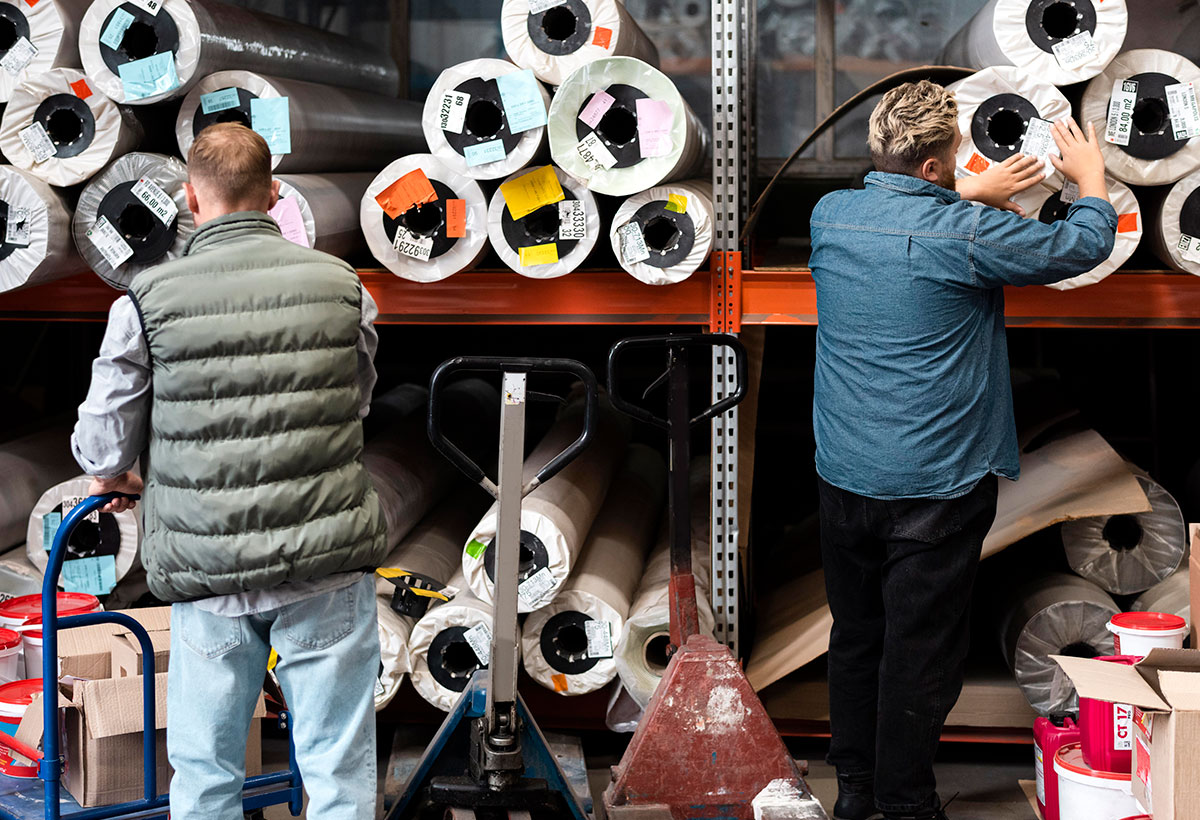In any business, there are internal (company-related) and external (market-related) factors that influence organizational performance. And, in the search for growth in the textile industry, it is necessary to consider them.
At this moment, among the external factors, we can point out the challenging international context due to wars. As well as tax reform, inflation and little consumption power of the population.
Furthermore, the energy crisis, rising transport prices and fluctuations in the value of raw materials are worrying the sector.
These are some of the reasons that could hinder the development of the industry. To combat these effects, the implementation of technologies, such as Big Data and modern machinery, must be prioritized.
This is the line of thought of Industry 4.0 that has been transforming the sector. All this thanks to cost reduction, process optimization, sector integration and increased competitiveness.
To help you, in this article we will present some of the main production problems that hinder the growth of the textile industry.
See below and enjoy reading!
1. Lack of consolidated and accurate data in the textile industry
To have assertive management, organizations in the textile industry need to bedata-driven. Thus, it is possible to leave the “achometer” aside and develop a much more agile and precise decision-making and production process.
Furthermore, with them, there will be the possibility of generating market intelligence. And this is essential for adopting best practices in your production.
According to asurvey, 93% of Brazilian companies recognize the importance of data for executing processes. Therefore, 97%make decisions based on them.
And, to give you an idea of the importance of this technology, we can also mention a study by Mckinsey. It points out that, by 2025, the majority of businesses will be data-driven. They will be used to optimizealmost every aspect of the work.
Thinking specifically about the growth expectations of the textile industry, data becomes essential for understanding the problems. For example, the supply of poor quality inputs, such as fabrics, which generate rework, financial and productivity losses.
In other words, collecting, analyzing and managing data are actions that are part of an assertive strategy forquality control of the textile industry. They help:
- Measuring productivity;
- Assessment of market trends;
- Investment capacity, among others.
To achieve this, the industry needs to work with Big Data. This concept refers to a set of techniques, technologies and processes. They collect, process and store a multitude of data capable of guiding decision-making.
Every type of business needs to deal with a large and complex volume of internal and external information. Given this robust data, Big Data transforms it into insights.
Read also: Artificial intelligence in the textile industry: what to expect in the coming years?
2. Lack of inventory control

This is one of the problems in the textile industry that, unfortunately, is still quite common. When there is no precise and automated control over the entry and exit of inputs from stock, delays in production are inevitable. In this way, it affects the final quality.
To invest in the growth of the textile industry, the entire organization must function in an integrated, systemic and data-driven manner.
Therefore, sectors cannot be managed in isolation. The stock needs to be in constant balance with the production and purchasing sectors and, consequently, with the financial sector.
Often, the product arrives at the company or is used in production without being in stock control. Such an attitude, at first, may seem to speed up the process, but it is harming the dynamics of the business.
Without registration, it becomes impossible to generate a history that provides a study on seasonality. There is no way to guarantee a stock balance or a study on its production capacity. Much less a more efficient performance of the company’s purchasing sector.
For all these reasons, it is essential tomotivate and engage the team to actually use the company’s ERP. To then make decisions based on data and integrate the sector with other areas. Thus generating accurate and real-time information.
It is noteworthy that data between sectors provides important information that speeds up and makes inventory control more efficient. Some examples are:
- Volume of raw materials and merchandise;
- Variety of products that need to be purchased or that are still available;
- Classification of suppliers according to products sold, delivery times, values and payment conditions.
In short, maintaining alignment between sectors avoids problems withproduction bottlenecks, outdated data and communication failures.
3. Low productivity of old machinery hinders the growth of the textile industry
Sometimes, thinking about saving money, some companies fail to update their industrial park. However, this soon turns out to be an error that impacts production quantitatively and qualitatively.
This is because it is common for old machinery to not offer technology that allows precision, agility and quality in textile processes. Furthermore, such machines normally stop more frequently due to breakdowns or due to the need for maintenance. maintenance. This causes delays in the delivery schedule and a significant drop in productivity.
In addition to not being efficient and resulting in considerable maintenance costs,old machinesincrease the risk of accidents.
Therefore, it is necessary to carry out quality inspections whenever equipment begins to show many faults. Also carry out the process when there are repeated maintenance needs and a drop in productivity.
To avoid the continuation of these problems in the textile industry, invest in modern, innovative and intelligent machines!
4. Low productivity of new machinery
It may seem contradictory, but new machinery can also have low productivity. This occurs when the equipment is not suitable for the production process and when the team does not know how to operate it correctly.
Therefore, before purchasing new machinery and equipment, carry out market research into the best options. Select those that best meet the specific needs of the industry.
To do this, it is necessary to study what needs to be improved in production. This way, it is possible to assess which features of the new equipment are the most important for the company.
After all, there are very efficient and moderntechnologies and machines on the market, but not all of them are functional for all processes.
To avoid this drop in production when receiving new equipment, training needs to be the watchword. Therefore, when the new machine arrives, carry out training and awareness-raising actions.
This means operators will be more motivated to work with the new machinery and will know how to use it correctly. And don’t forget to go through the NR12 guidelines and objectives for this investment.
Read also: 5 reasons to invest in technology 4.0
Promote your growth through productivity!
The growth of the textile industry is not only related to the economic scenario, although this is a primary factor. It is also necessary to consider the ability to adapt to new technologies and implement the industry 4.0 concept.
Furthermore, we must reflect (and invest) on data-driven management, cost reduction and increasing quality. Competitive capacity also needs to be considered to increase your revenue.
And in your company, do you still identify more problems that hinder productivity? So, download our infographic now and learn how to solve the main production bottlenecks!




